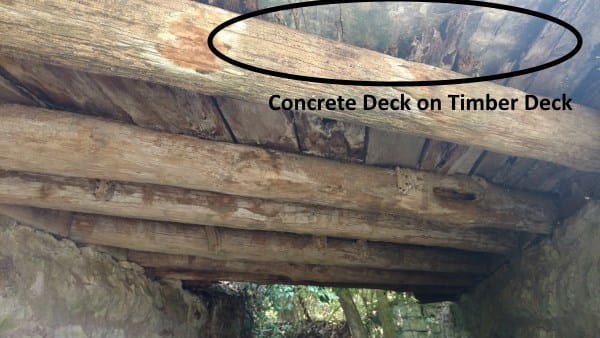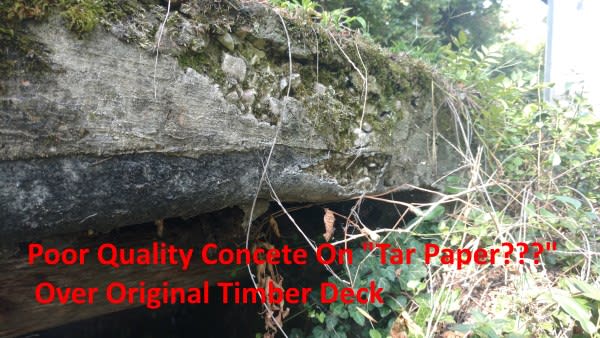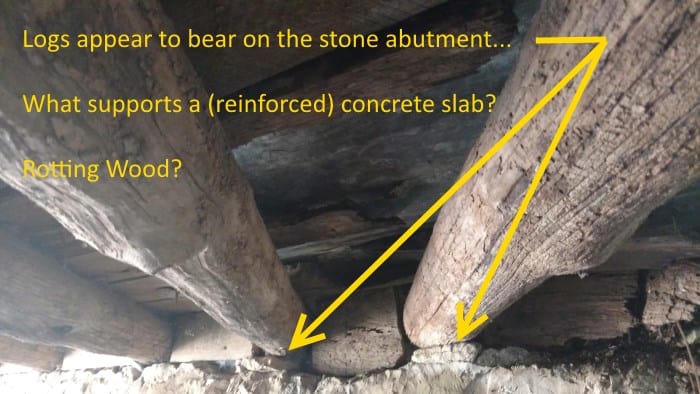Hey all,
I've been asked by a client to look at an old timber/concrete deck (?) bridge and give it a load rating. Apparently the fire dept. was concerned their trucks would not be able to go over this bridge and serve the 9-10 houses on the dead end it leads to. Full disclosure, all my experience is in building design, but it seems like an interesting problem. After looking at the pictures it seems much older than I originally thought and I haven't been able to make it out there to take a look myself yet. Pictures are below:
Link
My questions before taking the job would be:
1. Is this even worth looking at? Based on the construction would an older wiser bridge engineer just say there is now way it works?
2. How does one strengthen a bridge like this? Is the only option total replacement?
3. Are there other issues beyond just the structural engineering that need to be considered?
Thanks for any help!
I've been asked by a client to look at an old timber/concrete deck (?) bridge and give it a load rating. Apparently the fire dept. was concerned their trucks would not be able to go over this bridge and serve the 9-10 houses on the dead end it leads to. Full disclosure, all my experience is in building design, but it seems like an interesting problem. After looking at the pictures it seems much older than I originally thought and I haven't been able to make it out there to take a look myself yet. Pictures are below:
Link
My questions before taking the job would be:
1. Is this even worth looking at? Based on the construction would an older wiser bridge engineer just say there is now way it works?
2. How does one strengthen a bridge like this? Is the only option total replacement?
3. Are there other issues beyond just the structural engineering that need to be considered?
Thanks for any help!



![[idea] [idea] [idea]](/data/assets/smilies/idea.gif)
![[r2d2] [r2d2] [r2d2]](/data/assets/smilies/r2d2.gif)
